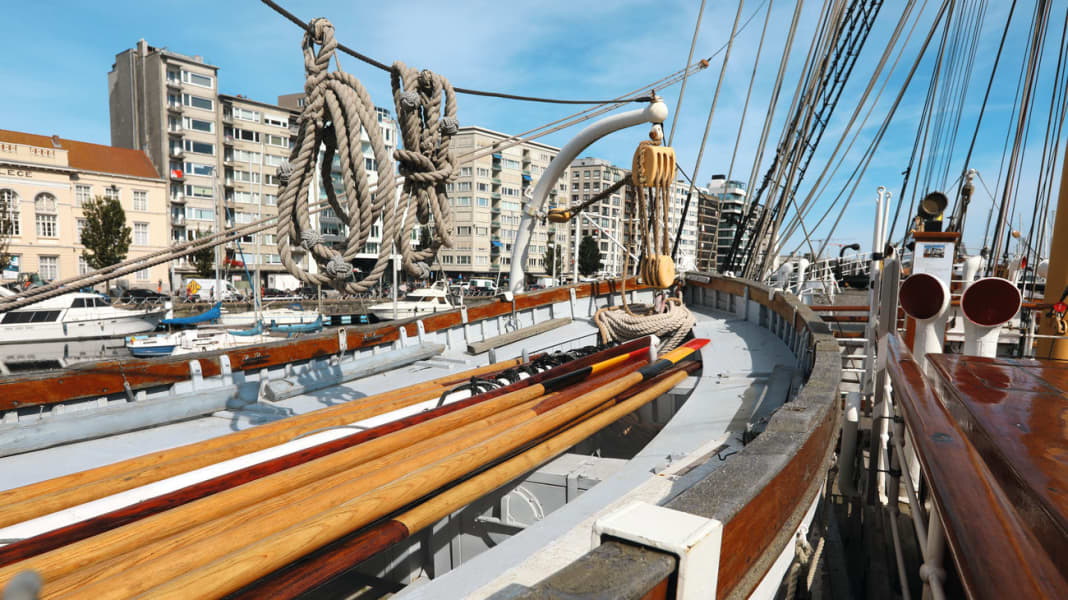
The slender bowsprit of the "Mercator" points towards the North Sea. People are working, painting, sawing and sanding on deck. It seems as if the three-master could set sail at any time, as it used to, to Easter Island, Rio de Janeiro or Boma on the Congo. But its sails have long since been struck: the former training ship of the Belgian merchant navy, named after the famous cartographer born in Flanders, has now been moored in the harbour basin of Ostend for sixty years, which now bears the name Mercatordok in his honour. As a floating museum of an era when seafaring was even more elementary than it is today.
However, the white barquentine is not alone, but surrounded by sailing and motor yachts on the jetties of the Mercator Marina. The Royal North Sea Yacht Club has its home here, but guests are also welcome ( www.mercatormarina.be ). There are quite a few of them in summer, because Ostend certainly has a right to be the first stopover destination along the Belgian coast. Regardless of whether you are on your way to the Mediterranean or whether the south-west North Sea itself is the destination of your journey. The approach is from the Voorhaven to starboard via the Montgomerydok (dok means harbour basin) and via the following lock, where visitors can register and be allocated their berth at the same time. When you disembark, you are right in the centre of things. To the south is the modern residential district of Hazegras with the Maria Hendrikapark behind it, to the north the chessboard-like centre of Ostend. The large railway station with its Belle Époque façade is also located right by the harbour. Into the city, to the north, past the Sint-Petrus-en-Pauluskerk church.
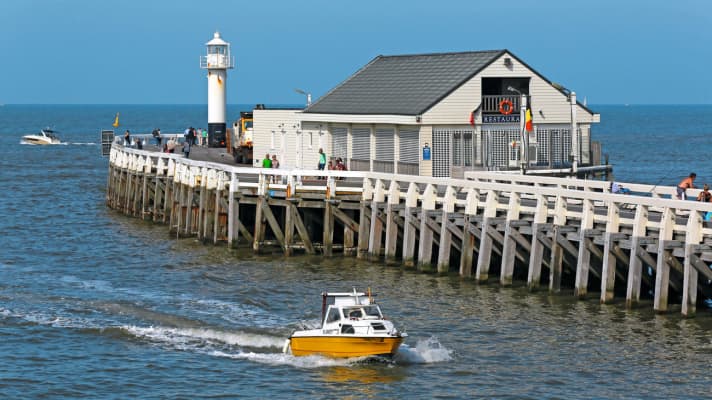
Its imposing neo-Gothic portal is specially orientated towards the east and is therefore visible from every ship coming in. As a trading town, you show what you've got! Otherwise, the building is very narrow, with many balconies. Together with the narrow, shaded streets, the whole thing has a touch of southern Europe about it. It certainly has a very different flair to the neighbouring Netherlands. The colours seem to come from the beach, lots of light-coloured stone, lots of clinker bricks in beige, ochre and light grey. Speaking of the beach: there really is sand by the sea here. The entire coastline is covered in it. "Coastal strip" is what the Flemish-speaking inhabitants call this region. It is less than seventy kilometres from one end of the country to the other, between Cadzand in the Netherlands and Dunkirk in France. And their beach is only interrupted by the harbours. Even though they are at the centre of this story, it is the sand that runs through it like a bright thread.
This is also the case in Nieuwpoort, the westernmost harbour in Belgium, close to the French border. In contrast to Ostend, however, leisure boating is kept to itself. The town at the mouth of the River Yser is considered the centre of regatta sport in the country. When you see the large basin of the new harbour with its more than 300 berths and the modern service facilities, this comes as no surprise. Guests are accommodated in the Oude Havn at the Koninklijke Yacht Club Nieuwpoort, which branches off from the west bank of the river (www.kycn.be). The city centre is around one kilometre away from the Royal Jetties and the beach just under two kilometres. The way there leads along the Yser through the Prins Mauritspark, so far, so beautiful.
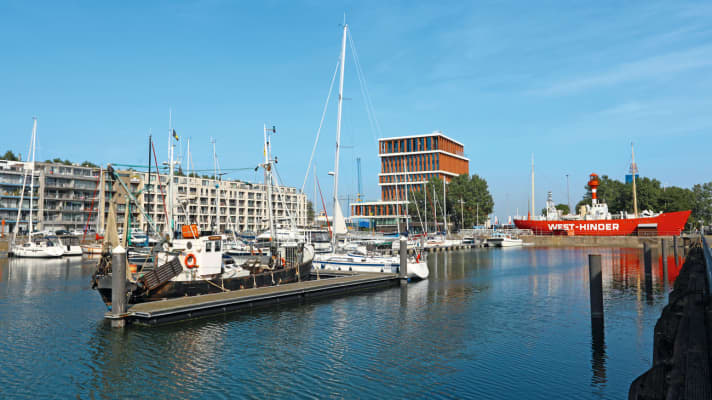
But then it gets tough in the truest sense of the word: the concrete bed castles, which have been erected here in three rows close together with almost no gaps - often with ten storeys or more - again literally dwarf everything else.
Green spaces or seaside architecture: almost non-existent. Nieuwpoort has something of a gigantic western town, with the wide beach taking on the role of the desert. An atmosphere that can also be found elsewhere. If you look at it positively, you could say that the Belgians make the most of the limited space for holiday homes along their short coastline.
Blankenberge also announces itself with a wall of concrete. From the dyke, which surrounds the circular basin of the new marina like the stands of an arena, you have a good view. On the seaward side, the built-up beach separates it from the North Sea. Block after block of flats, even the lighthouse at the harbour entrance blends in architecturally, creating a unique, rugged charm in the sunshine. Oude and Nieuwe Haven are run by the Royal Scarphout Yachtclub Blankenberge ( www.scarphout.be ). The landing stage is located on the starboard side.
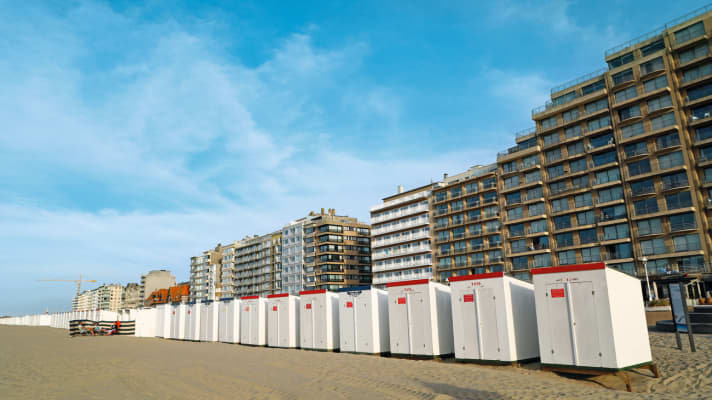
Blankenberge is interesting for those skippers who are planning a visit to neighbouring Zeebrugge but want to avoid the approach to its busy seaport. As in all towns along the coast, the Kusttram also stops here: there are 67 stations for 67 kilometres between Knokke in the east and De Panne in the west. The coastal tram takes just under two and a half hours to cover the entire distance, from Blankenberge to Zeebrugge just fifteen minutes (www.delijn.be).
After Antwerp on the Scheldt, Zeebrugge is the country's second most important transhipment centre for long-distance trade and its largest directly on the North Sea. One of its most important customers is the automotive industry: almost three million new vehicles are loaded here every year. The Fluyx terminal is also one of the most important points for the import of liquefied natural gas, a commodity whose importance is likely to grow in the future due to recent political developments.
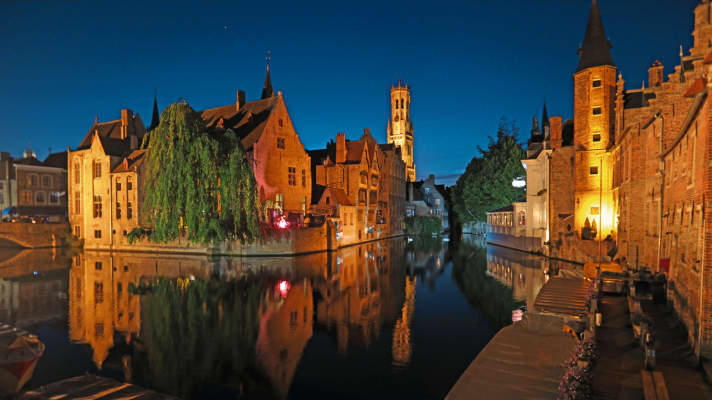
Guests on their own keel pass Wielingendok, Albert-II-dok and the container terminal on starboard, keep to the right in the southern part of the harbour towards Visartsluis, but enter Jachthaven Zeebrugge on port just before the lock. On the right bank, old commercial buildings from the fishing industry line the harbour, while modern residential architecture rises up on the left.
At the far end, the old lightship "West-Hinder", which gave its name to the Westhinder Marina (www.westhindermarina.be), is clearly visible on land. However, the jetties of the Royal Belgian Sailing Club's Zeebrugge Marina on the left on the north bank (www.rbsc.be) offer more space for visitors. The town itself has an industrial character, with red brick dominating the residential area south of the harbour. The Seafront Zeebrugge marine experience centre was last closed, but is due to reopen in April this year ( www.seafront.be ).
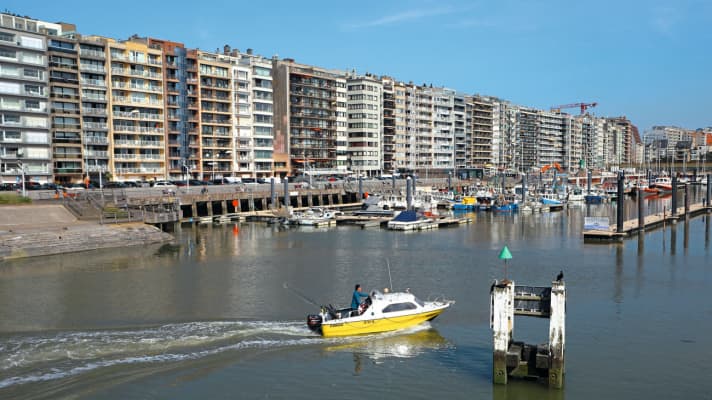
However, Zeebrugge is within easy reach of the most beautiful beach in the country: It takes just over half an hour on the Kusttram from Zeebrugge Kerk to Knokke-Heist, Belgium's easternmost seaside resort. The last section of the beach merges into the Het Zwin nature reserve, right on the border with the Netherlands. If you pay attention here, you may find a special souvenir: Knokke-Heist is one of the few places in Europe where fossilised shark teeth can be found ( www.zwin.be ).
West Flanders' highlight may not be on the North Sea, but it is still a must: the old trading city of Bruges. The detour inland (if you haven't already travelled this way) leads through the Visartsluis and across the Boudewijnkanaal. After twelve dead straight kilometres, you reach the capital of the province. The Vlaamse Pleziervaart Federatie's Passantenhaven Brugge Coupure is located in the south-west of the city centre ( www.vpf.be/VPFMeerboeien > PH Brugge Coupure). The old town centre with the Stadhuis, the Provinciaal Hof and the Belfort bell tower is a showcase of magnificent architecture. And if you still haven't got your hands on a souvenir, you'll find it here. See Bruges and die? Not before you've tasted the chocolate and beer here!
Need more information? You can find the district portrait with more pictures and a service section in BOOTE issue 04/2022 - from 16 March 2022 at newsstands or online at Delius Klasing Shop.

